What is the variety of Huakui coffee? description of the flavor and taste of the brewing method of Hechong Huakui coffee
Luckin Coffee is a well-known coffee brand in China. Some time ago, Ruixing coffee officials announced a message that shocked people in the coffee circle, claiming that nearly half of the 90 tons of Huakui coffee beans they purchased had been drunk in just 10 days, and many stores were even out of stock. As soon as the news came out, it directly pushed the Sakuran coffee beans to the hot spot.
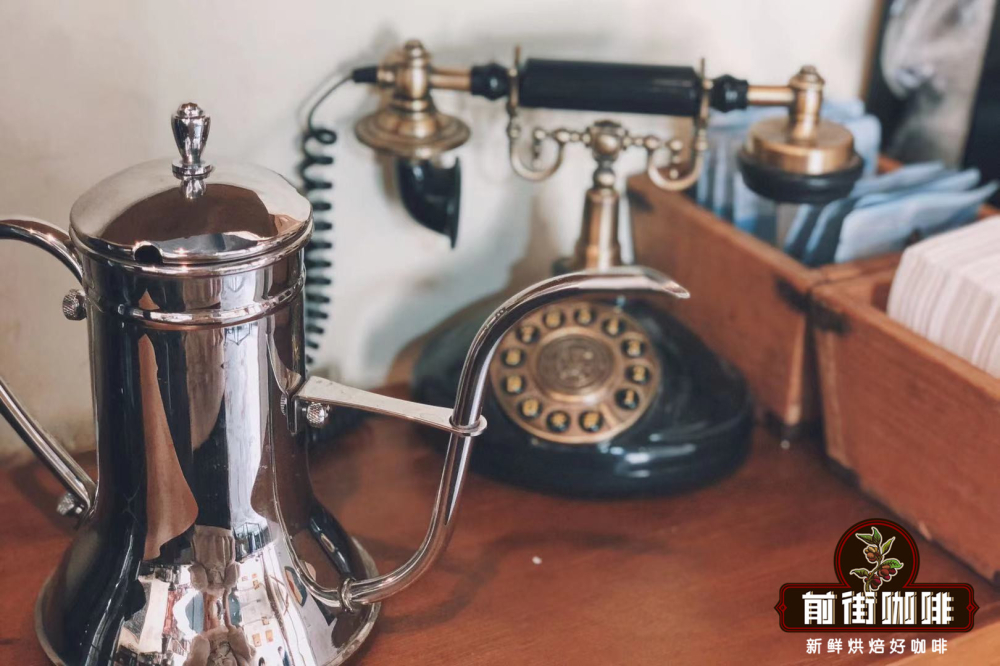
So why is Sakui coffee so popular? Because Lucky's Sokui SOE is so popular that many people come here and find it tastes better than the coffee they have ever drunk and has a unique taste. Here Qianjie coffee for everyone to popularize science, in fact, we taste this unique taste has a term, called coffee flavor. In the literal sense, Sakuran is a coffee bean full of fragrance. In fact, the aroma of Sakui coffee is not strong, but more fruity, such as passion fruit, strawberry, mango, jackfruit, citrus and so on. The fruity flavor here is the flavor description that often appears in coffee beans, usually the flavor spectrum on the right side of the flavor wheel of SCAA coffee.
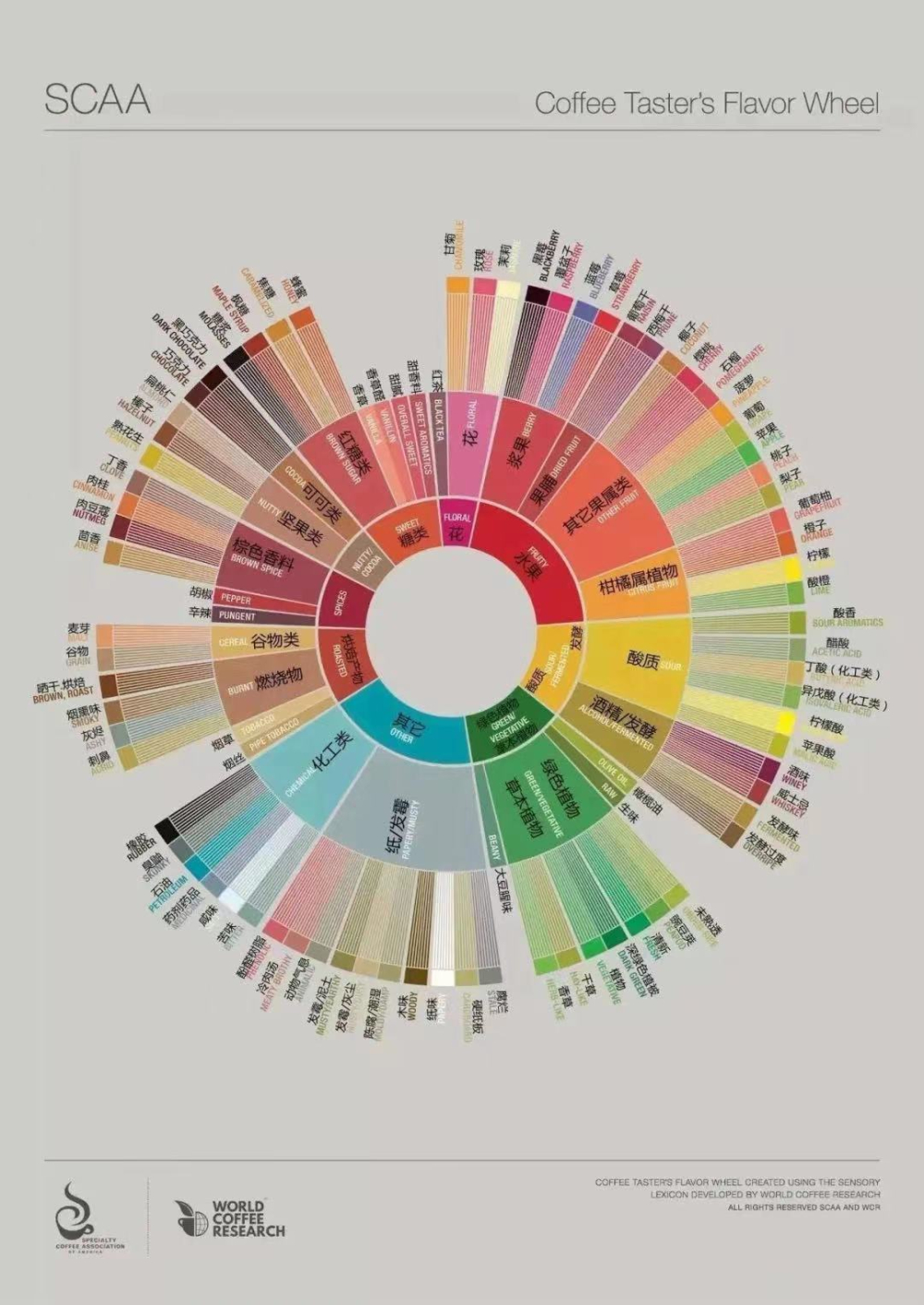
At this point, many people will have questions, why does Sakuran have a fruity fragrance? Is there any food additive in this coffee bean? Qianjie can definitely tell you: of course not! This is the taste of the coffee bean itself. Huakui Coffee Bean is actually a coffee bean from Humbela, a Sidamoz region in Ethiopia. The general name of coffee is named after the producing area and place of origin. Humbera is not the "Sakuran" of the head of the flower, whether it is translated into English or Amharic of Ethiopia. Here's another story.
In the coffee circle, there is a coffee bean with great fame and excellent quality, which appears in the coffee world-class competition all the year round, and that is Rosa coffee bean. This is one of the most popular stars in the 2004 Panama BOP contest. Its English name is "Geisha". When it was introduced to Taiwan, it was translated as "geisha" because Geisha is synonymous with the Japanese word for "Yun er", and Taiwan's coffee culture is also learning from Japan. When this bean was introduced into the mainland, it was named "Rose Summer". The name of this Sakuran has an important relationship with the bean Geisha.
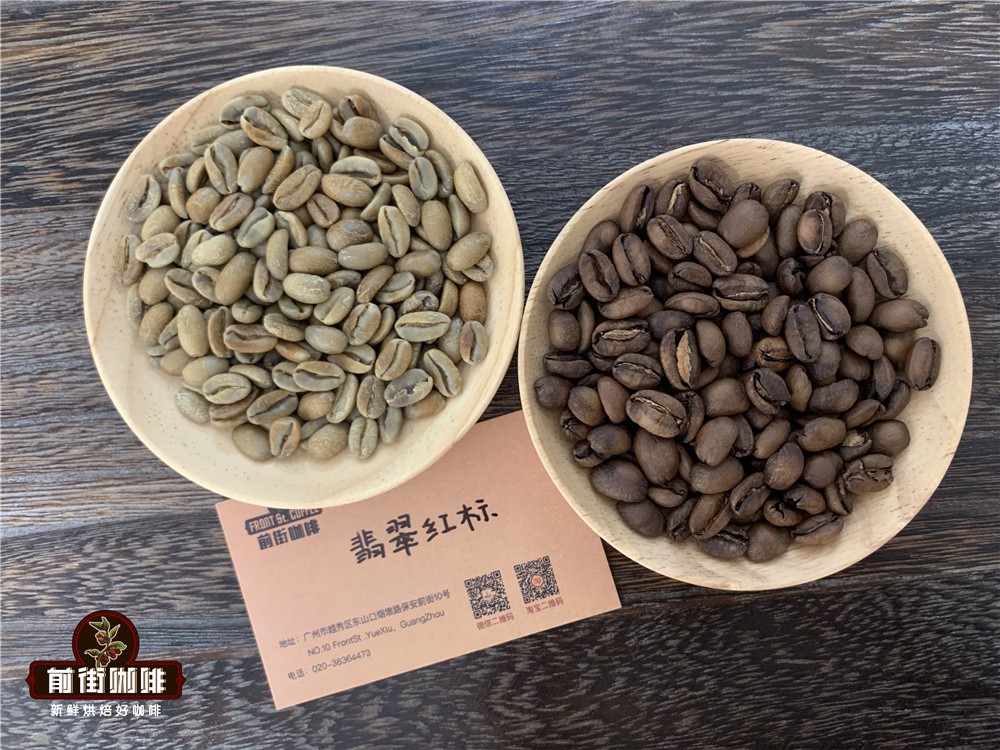
At the 2017 TOH Raw Bean Competition (the Taste Of Harvest), a raw bean from the Sidamohan Bella region stood out with a strong strawberry and cream aroma, winning the championship of the Ethiopian TOH tanning group with a high score of 88.21. In the same year, barista Li Jianfei used this batch of coffee beans to participate in the World Coffee Brewing Competition, beating many contestants of Rose Summer Coffee, and won the runner-up in China in the World Coffee Brewing Competition. The Beijing raw bean merchant who introduced this coffee bean was very happy that this Humbela coffee bean actually defeated the victorious army Rosa (geisha). Isn't it the leader of the flower? He named it Sakuran. As a result, this Humbela coffee bean is gradually loved by domestic coffee lovers in the name of Sakuran.
Knowing the origin of the name of Huakui Coffee and its famous history, I believe everyone is very curious about this legendary bean. Of course, the best curiosity is probably its flavor. We all know that coffee is, in the final analysis, the fruit / seed of a shrub. After thousands of years of domestication and cultivation, coffee has become agricultural products such as rice and soybeans. It is eaten by roasting / grinding and brewing and drinking. It has become a refreshing drink for human beings. On the other hand, agricultural products are deeply affected by varieties, climate / soil and other wind and soil conditions. by consulting the data, we have sorted out the wind and soil data of the producing area as follows:
This coffee comes from GUJI, Ethiopia, which is the largest coffee producing area in Ethiopia, and Sakuran comes from one of the sub-producing areas, Hambella. As mentioned earlier, the flavor of coffee is affected by many factors, even if it is in the same producing area, it will show different flavor. Therefore, the coffee flavor of Sidamo is very diverse, because of the different soil composition, regional microclimate and countless native coffee varieties, the coffee produced in each urban area has obvious differences and characteristics.
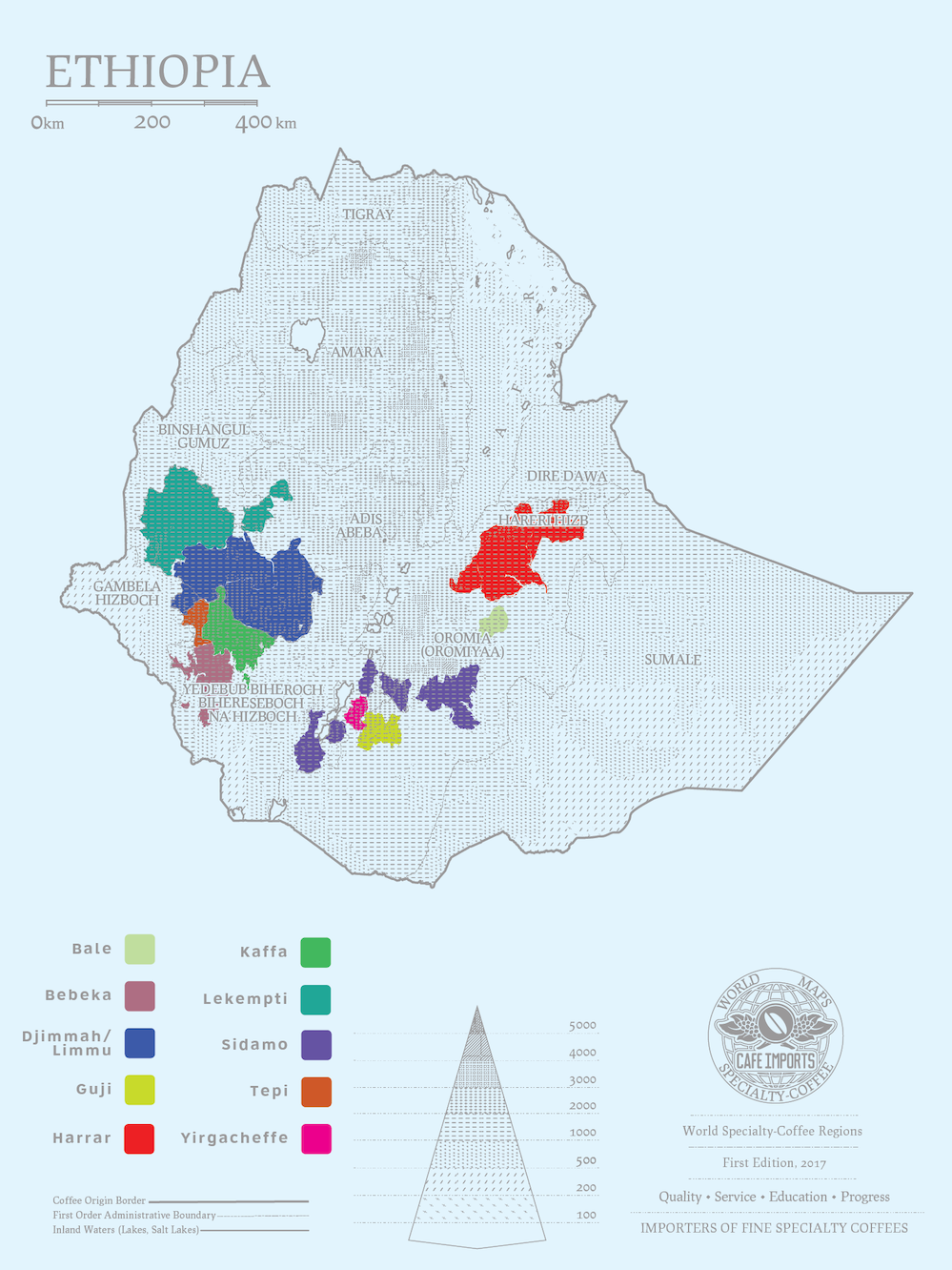
The Sidamo producing area (Sidama) is located in southern Ethiopia, which is dominated by agriculture, while the coffee growing area is located around the East African Rift Valley (Great Rift Valley). Humbera is under the jurisdiction of Oromiyaa, the southernmost administrative state of Ethiopia, facing Kochore, a sub-production area of the Yegashifi production area in the west, Shakiso to the east, Uraga to the south, Kercha, Shakiso, Uraga and Kercha to the north.
According to statistics, there are about 20 processing plants in Hambelane, which are distributed in different villages and manors in sub-producing areas of different sizes. DW Coffee Export, to which Sakuran belongs, has a core production area in Humbera, Dimtu, and Dimtu produces about 1100 tons of coffee a year. There are four manor processing plants in the Dimtu area, namely Buku Abel, Buku Saysay, Haro Soresa and Tirtiro Goye, among which only the sun-tanned coffee produced and processed by Buku Abel is the "Sakuran", so some people jokingly call Buku Abel the "Sakuran Manor".
The variety of Huakui coffee bean is the original species, that is, the coffee tree has been rooted in Humbela for a long time, and it is difficult to screen and distinguish the varieties. Due to the long-term growth in a piece of soil and water, the coffee flavor tends to be native, so it is collectively referred to as the original species. Locals will also name some varieties with great differences according to the characteristics of coffee trees and coffee fruits. For example, the variety of small grain Sakuran is dega, which refers to a kind of tree species with small, small leaves, dense leaves and small coffee beans. The X.0 series is not so fastidious, we can still find coffee beans of different sizes in Sakui's coffee beans.
In addition to local conditions, coffee, a unique agricultural product, is also deeply affected by field management, post-processing and other factors. In a narrow sense, Huakui coffee beans specifically refer to the sun-treated coffee beans from the Humbera Buku Abel processing plant. Of course, affected by the diversified needs of the market, later, there is also a washing treatment of Huakui coffee beans, which is not shown here.
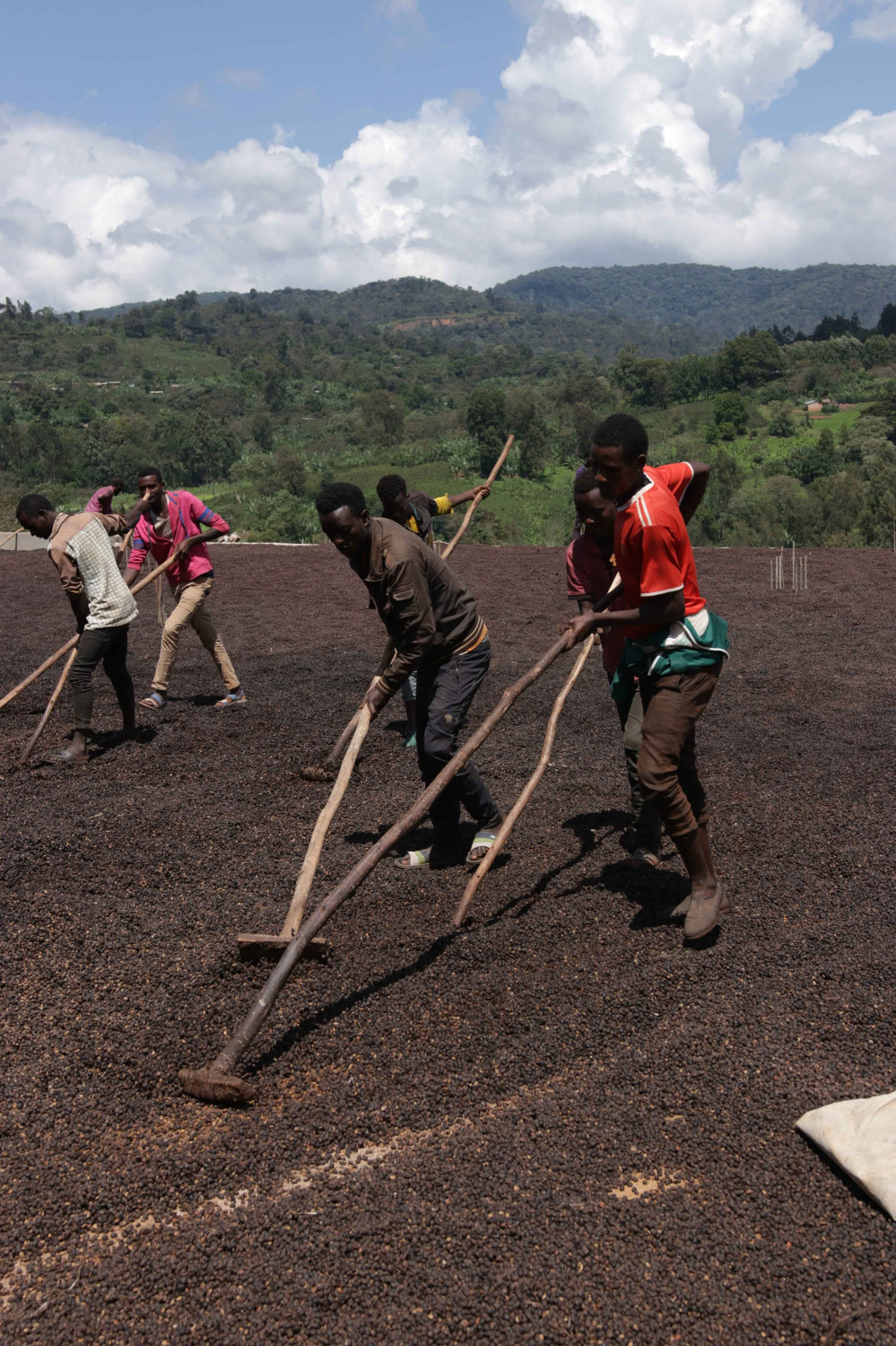
During the annual coffee harvest and processing season (December-January), the mountains are covered with red coffee fruits. Curry farmers are required to pick red fruits with a sugar content of more than 30 before they begin to pick and sun-treat the coffee fruits. In the first two days of the sun, it is necessary to ensure the humidity of the red fruit so that its fructose fully begins to ferment. At the same time, the high-altitude geographical location, so that the night temperature of the treatment plant can be reduced to about 12 degrees Celsius, and will not produce the smell of excessive fermentation because the temperature is too high. When the temperature is relatively high at noon, the farmer will cover the red fruit in time to prevent sunburn. In order to prevent sudden rain at night, it will be wrapped in thick plastic sheeting. In this way, the red fruit is fermented and dehydrated at a lower temperature.
After 18 days of sun treatment, the moisture content of raw coffee beans decreased to about 13%, stopped the sun treatment, put it in sacks, put it into the warehouse under the natural conditions of 12-22 degrees Celsius and 45-55% humidity, and raised raw beans and further dehydration for about 50 days. When the moisture content of raw beans reaches about 11%, it is transported to the treatment plant for shelling and screening. The coffee beans treated by the exquisite sun treatment of the Buku Abel processing plant have a unique strawberry cream flavor.
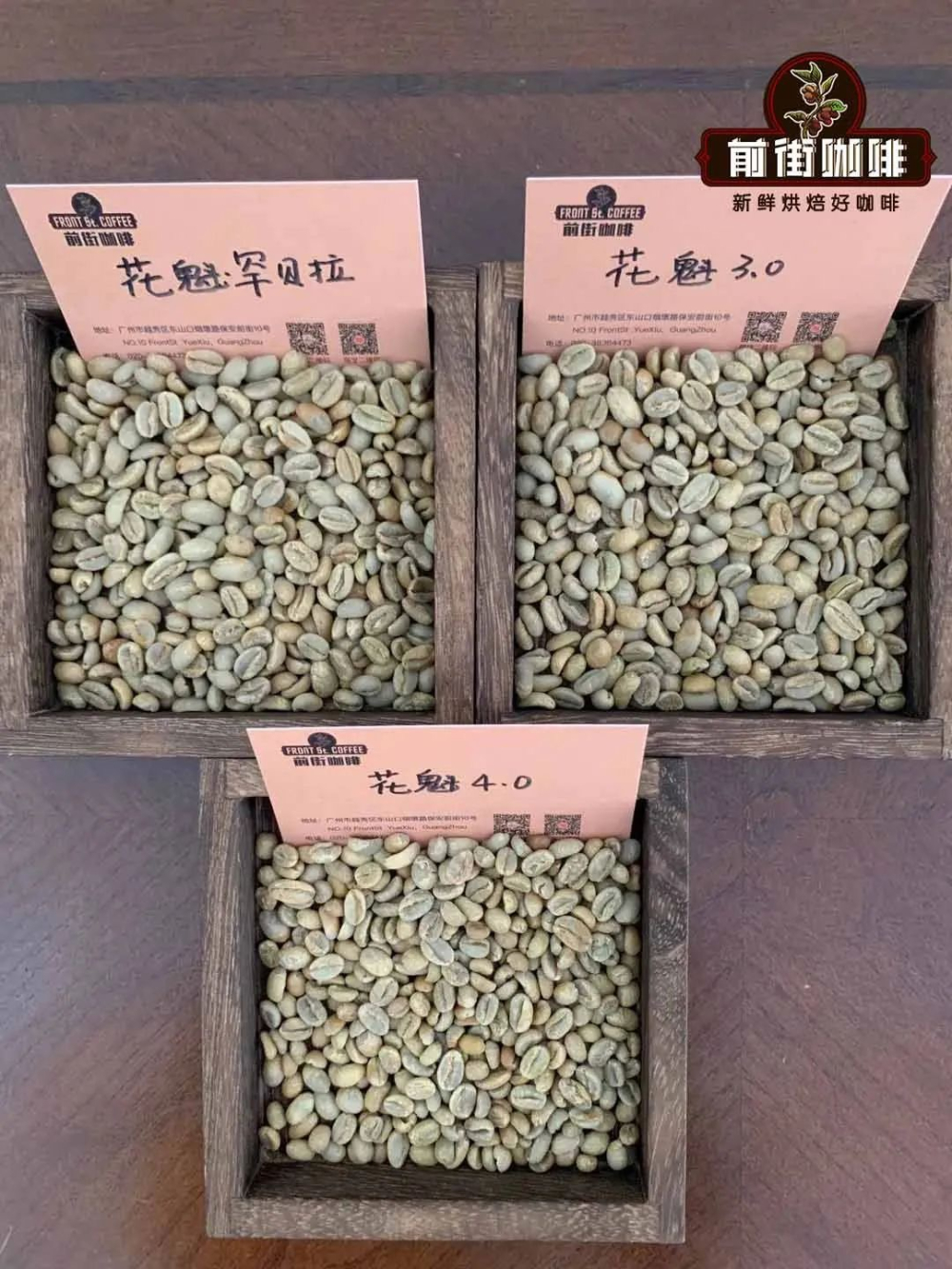
After the fragrance of Huakui coffee beans was revealed in 2017, domestic coffee people introduced it year after year, and our Qianjie coffee is no exception. After 2017, Huakui coffee beans use X.0 series as the difference of production season. For example, Sakuran 2.0 was launched in 2018, Sakuran 3.0 and 3.1 were launched in 2019, and so on. Of course, friends who are familiar with Sakuran will also find that since 2020, this coffee bean from Humbera has been divided into Sakui 4.0 and Xiaogui (to avoid being confused with Arabica, Xiaogui removed the word "Xiaogui". You can place an order in Qianjie store or Taobao to compare the difference between X.0 and Huakui coffee beans, the latter is obviously smaller than the former in shape and different in flavor. ).
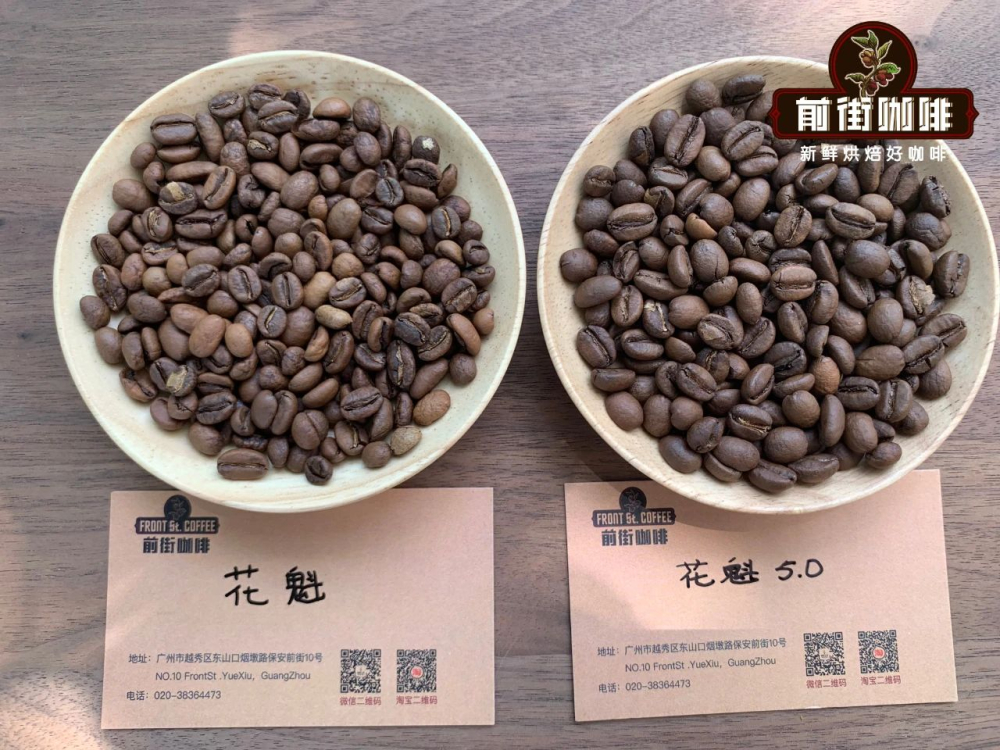
As mentioned earlier, Huakui coffee beans were first made in 2017 with a rich strawberry cream flavor. But the baristas in Qianjie drank similar flavors to the 17-year-old Sakuran in 2018 and 2019, but the mellow thickness and aftertaste were not as good as the 17-year-old. Of course, as a crop, the flavor of coffee changes slightly every year due to the changes of soil, climate and precipitation in the producing area. Qianjie Coffee also wrote an article about the taste of Huakui Coffee before. But Qianjie also found that many coffee lovers who liked the flavor of Sakui in 2017 were puzzled by its changes. What on earth is the problem?
Qianjie Coffee took samples of Huakui coffee beans and observed the raw coffee beans in the new production season. By comparing different batches of Sakuran, it was more obvious in 2018 and 2019, sometimes in ten sacks. There will be several sacks of similar small beans. So we realized that the main source of the aroma of Sakui in 2017 is that there are some particularly small varieties of Sakui coffee beans. So in 1919, Qianjie fed this information back to raw bean merchants, and then Xiao Grain Sakuran was separated every year and divided into separate categories. Humbera sun-cured coffee beans in the 20 / 21 season can be divided into Sakui coffee beans and Huakui 5.0 coffee beans. At present, these two year-round top-selling beans can still be found in Qianjie coffee.
Cooking suggestion
Qianjie coffee is generally for shallow roasted beans, it is recommended to use Hario V60 filter cup for hand-brewing, using 15 grams of powder, the ratio of powder to water is 1: 15, 90 degrees Celsius, 93 degrees Celsius, the degree of grinding is medium and fine grinding (can be judged by the China 20 standard sieve, the sieving rate is 80%). (the cooking parameters can be scanned by the QR code on the bean package. )
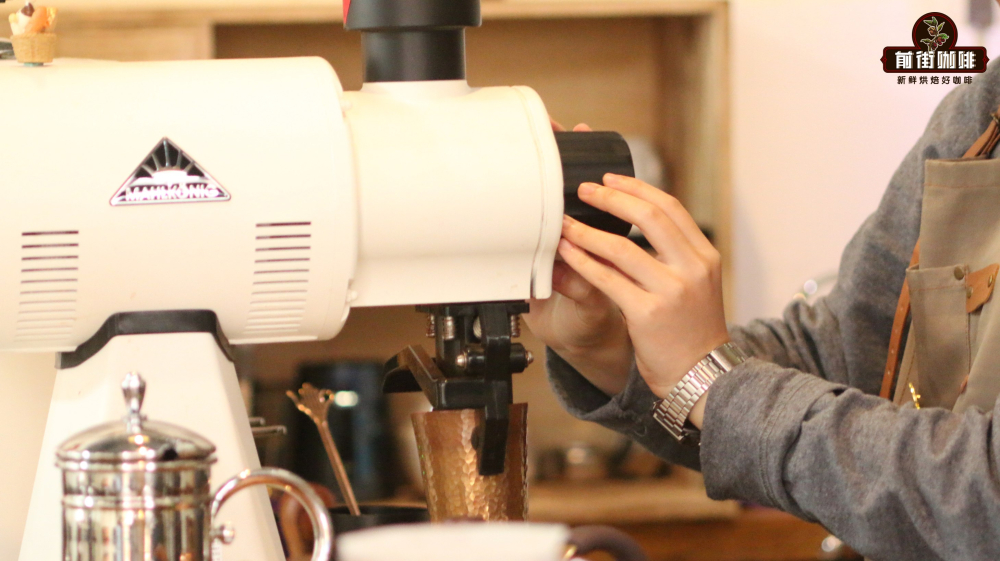
Then use three-stage extraction method for cooking. First of all, steam with 2 times the amount of coffee powder, that is, 30 grams of water for 30 seconds, then small flow circle injection to 125 grams, wait until the water level drops to 1 / 3, continue to water injection to 225 grams, (time of steaming starts) extraction time is 2 minutes 39 percent 00 ".
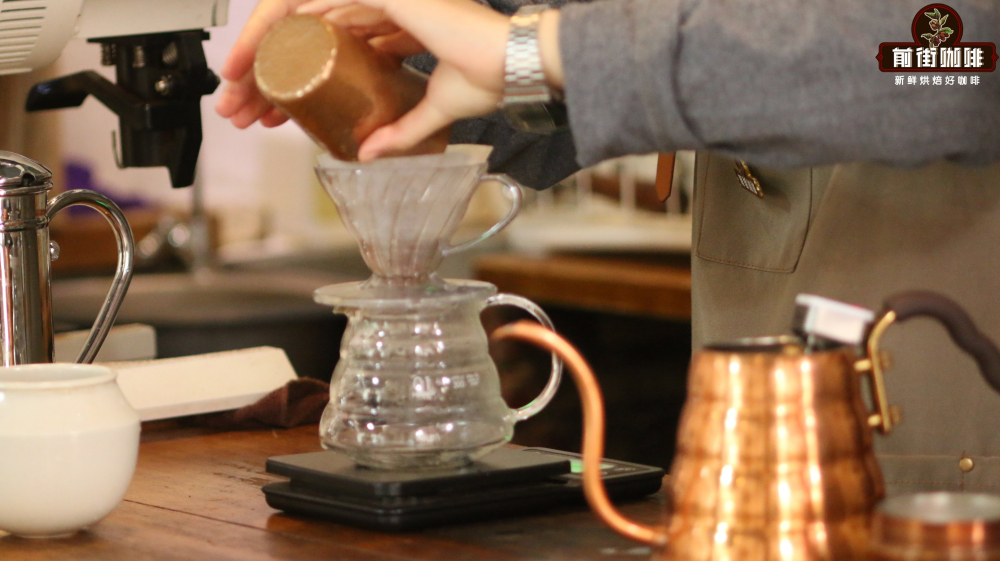
After the extraction, you need to shake it gently, then divide the cup or pour it into your favorite cup to taste. Qianjie coffee is recommended to smell first, feel the precursor aroma of Huakui coffee beans, and then sip and fully feel its flavor. Some friends may find the sound of sipping indecent, but after mastering it, you can feel the feeling of "blooming" in the mouth as described by coffee celebrities.

Huakui has obvious melon and fruit aromas. The palate is soft and sour, with smooth taste, with passion fruit, jackfruit, strawberry and berry flavor. On the other hand, Huakui 5.0 has outstanding citrus berry flavor, with slight tropical fruit and obvious fruit juice taste. I wonder which one you would like better?
Professional coffee knowledge exchange more coffee bean information please follow the coffee workshop (Wechat official account cafe_style)
For more boutique coffee beans, please add private Qianjie coffee on Wechat. WeChat account: qjcoffeex
Important Notice :
前街咖啡 FrontStreet Coffee has moved to new addredd:
FrontStreet Coffee Address: 315,Donghua East Road,GuangZhou
Tel:020 38364473
- Prev
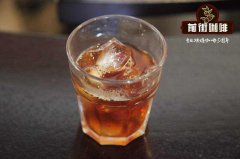
Introduction of Huakui Coffee Bean A brief introduction to the characteristics of Sidamo Sakura Coffee
Professional coffee knowledge exchange more coffee bean information please follow the coffee workshop (Wechat official account cafe_style) front street coffee-Sidamo Sakuran introduction Sidamo grows in the southernmost Ethiopian plateau between 4600-7200 feet (Sidamo province), is a famous boutique coffee area in southern Ethiopia, bordering Kenya, southeast of Gemma, just south of the capital
- Next
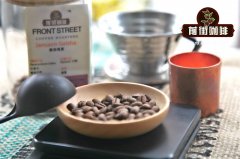
Introduction of Ethiopian Sidamo Coffee description of characteristics and Flavor of Sidamo Coffee beans
Professional coffee knowledge exchange more coffee bean information please follow Coffee Workshop (Wechat official account cafe_style) Front Street Coffee-Ethiopian Sidamo Coffee introduction Sidamo State is located in southern Ethiopia, and the terrain is changeable, belonging to nutrient-rich volcanic soil. Sidamo Coffee is rich in acidity and strong aroma. Sidamo coffee is perfect between aroma and taste.
Related
- Beginners will see the "Coffee pull flower" guide!
- What is the difference between ice blog purified milk and ordinary milk coffee?
- Why is the Philippines the largest producer of crops in Liberia?
- For coffee extraction, should the fine powder be retained?
- How does extracted espresso fill pressed powder? How much strength does it take to press the powder?
- How to make jasmine cold extract coffee? Is the jasmine + latte good?
- Will this little toy really make the coffee taste better? How does Lily Drip affect coffee extraction?
- Will the action of slapping the filter cup also affect coffee extraction?
- What's the difference between powder-to-water ratio and powder-to-liquid ratio?
- What is the Ethiopian local species? What does it have to do with Heirloom native species?

